
Sign in to your XDA account
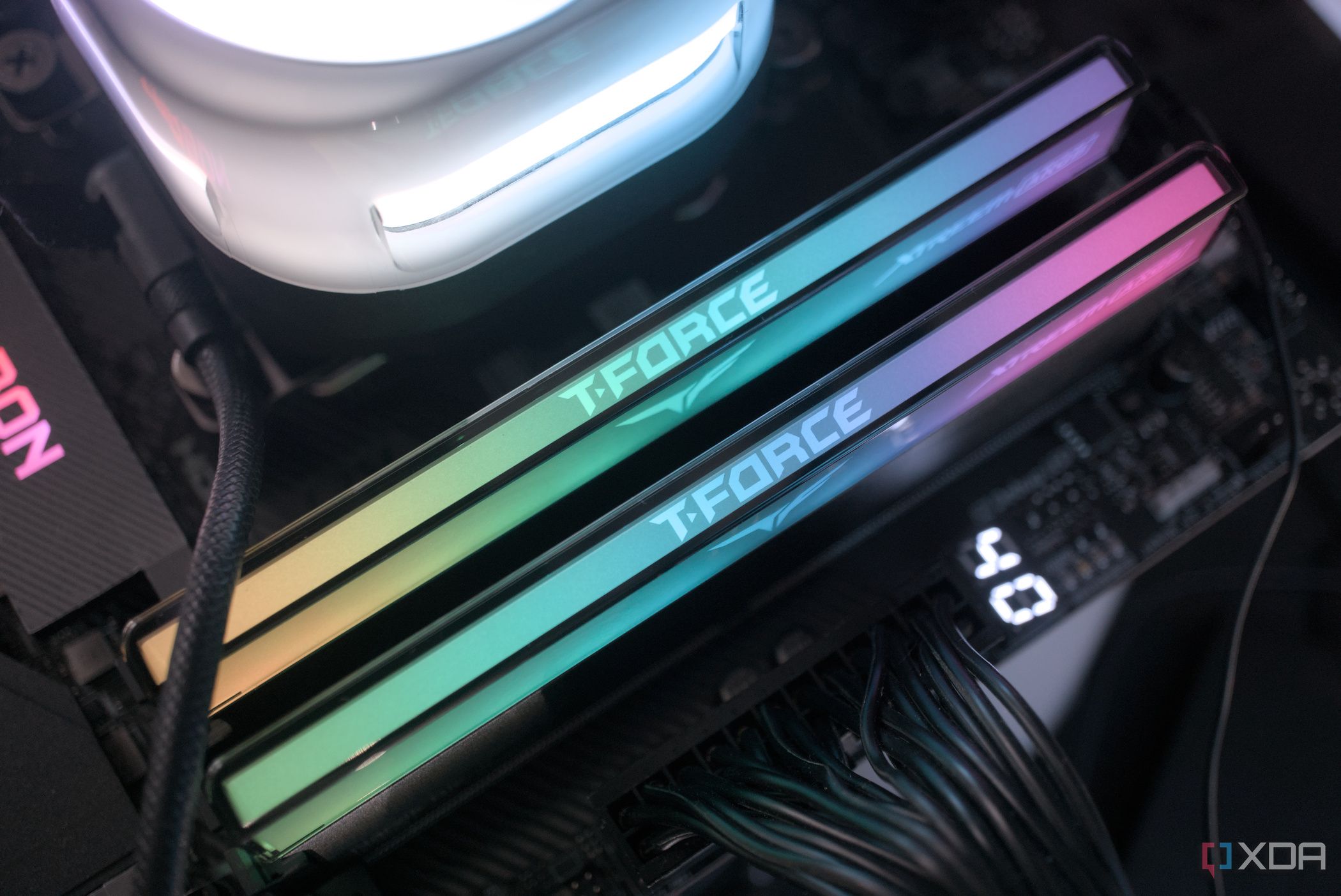
Every new generation of RAM has a rocky start, with early adopters taking the brunt of the issues. But now DDR5 is well into its mature phase, and every new platform uses it exclusively. That means it's a good time to upgrade because most of the issues have been worked out, and those that are part of the design have been documented thoroughly.
So, while looking for the best DDR5 RAM kit for your rig, you'll need to know a few things that aren't immediately apparent on the specs sheet. If you only plan on using two DIMMs, the quick guidance for AMD users is to aim for up to 24GB per DIMM with specifications of 6,000 MT/s and CL30. You could go a little higher on speeds for Intel CPUs, but you get diminishing returns pretty quickly. If you have specialized workflows or need more capacity, this baseline guidance doesn't apply as much, and it's time to dig deeper.
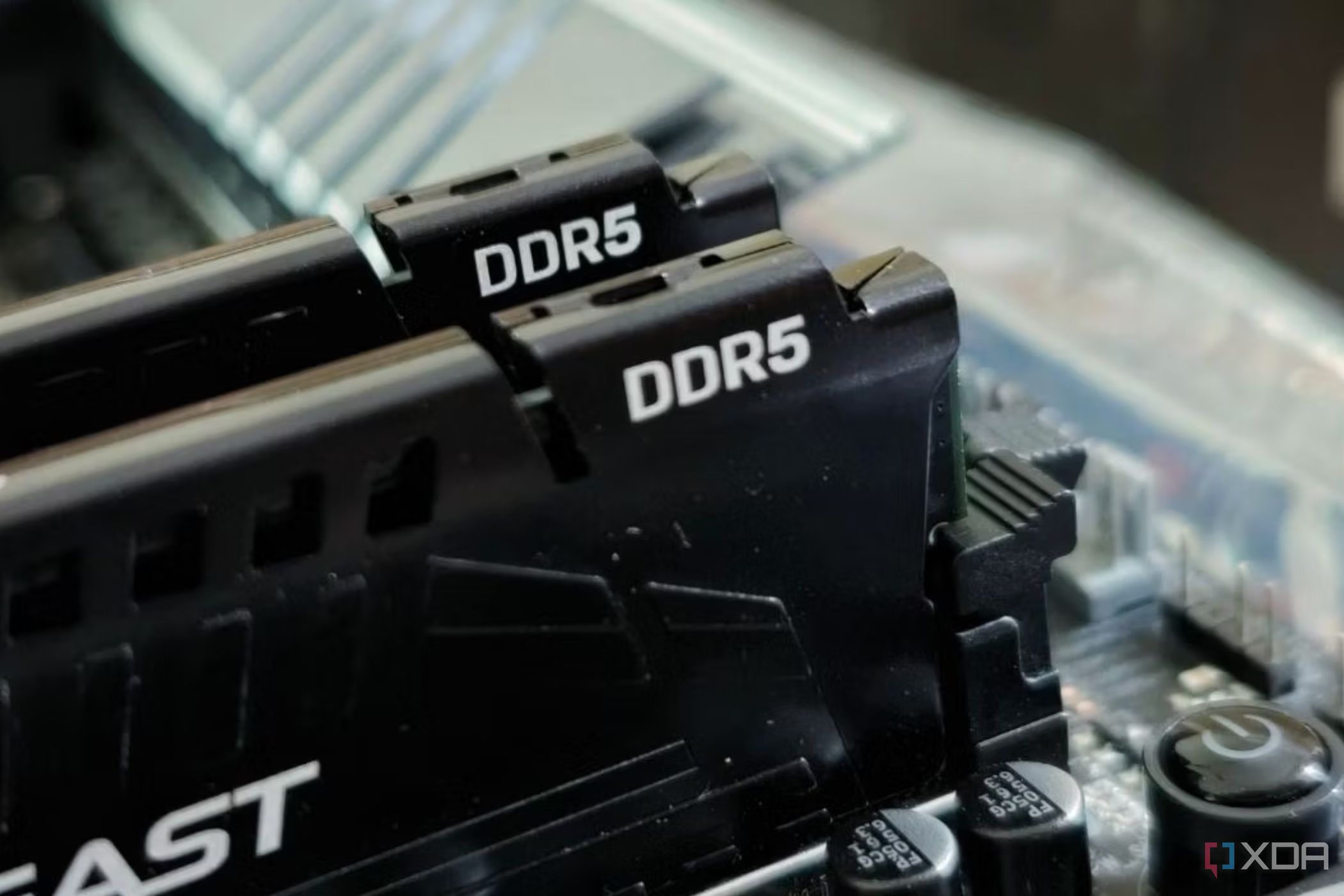
Related
DDR4 vs DDR5 RAM: What's different and which one should you buy?
DDR4 vs DDR5 RAM remains one of the most discussed topics in the PC computing space.
New RAM, new terms
And even more options to choose from
All DDR5 memory builds on the technology in prior generations, but it also comes with some impressive upgrades. It's not uncommon to see kits of 8,800 MT/s speeds, and some have shown over 10,000 MT/s when overclocked. DDR4 topped out at around 5,000 MT/s near the end, with 3,200 MT/s being more common. It does this while drawing less power, and can have much higher capacities per module.
DDR5 also changes things up to two independent 32-bit channels, each with 8 bits of error checking, over the single 64-bit channel with optional 8 bits of error checking in DDR4. That means it can access data faster, as each DIMM is acting as dual-channel, but it also means using more than two DIMMs on a motherboard brings hits to performance as they're harder for the IMC to run.
|
1.5V |
1.2V |
1.1V |
|
800-2133 MT/s |
2133-3200 MT/s |
4800-6400+ MT/s |
|
6.4-17 GB/s |
17-25.6 GB/s |
38.4-51.2+ GB/s |
|
240 |
288 |
288 |
|
8n |
8n |
8n |
|
8 |
16 |
32 |
|
1 |
4 (4x/x8) or 2 (x16) |
8 (x4/x8) or 4 (x16) |
|
8 |
8 |
16 |
|
Up to 16GB |
Up to 64GB |
Up to 128GB |
*Note: These are the JEDEC standards; overclocked DIMMs can reach higher speeds.
The other significant change is that the power regulation for DDR5 is now on the module, not the motherboard. The faster speeds of DDR5 made signaling issues more prevalent, and mounting the voltage regulator onboard meant better voltage regulation and signal integrity. You also get on-die ECC, which protects data integrity while on the module, but doesn't account for any issues in transport between the DIMM and CPU. It's important to note this isn't true ECC, which you'll also want if your workload is dependent on data integrity.
CPUs and supported memory frequency
And how it's only part of the equation
RAM compatibility has always been a merry dance between CPU specifications and the motherboard (specifically, the chipsets) used with it. That's not changed with DDR5; it's become more complex.
Let's look at what happens on Arrow Lake and Ryzen 9000 when you combine different RAM configurations. Note that this is only CPU support; the motherboard you put the CPU onto will likely have different RAM support numbers.
|
Intel |
AMD |
Intel |
AMD |
Intel |
AMD |
|
6,400 |
5,600 |
1 DPC |
1 DPC |
1 R |
1 R |
|
5,600 |
5,600 |
1 DPC |
1 DPC |
2 R |
2 R |
|
4,800 |
3,600 |
2 DPC |
2 DPC |
1 R |
1 R |
|
4,400 |
3,600 |
2 DPC |
2 DPC |
2 R |
2 R |
As you can see, the memory controller in AMD's Ryzen 9000 doesn't look as powerful as that in Intel's Arrow Lake. Still, it has one advantage—the same level of support for single- and dual-rank memory modules, so increasing capacity past 24GB (the highest capacity single-rank) doesn't come with a speed penalty like it does on Intel CPUs.
CUDIMMs make things more complicated. These specialized DDR5 modules include an onboard Client Clock Driver (CKD), which helps sync the clock signal generated by the processor to reach higher speeds. Currently, if you want the CKD to work, it is only supported on the desktop with Intel's Arrow Lake platform, and only on some motherboards. While this new type of DDR5 might boot on Ryzen 8000 and 9000 series CPUs, they do so in a bypass mode that removes the CKD circuitry from the mix, making it a pointless effort for AMD owners at this point.
I've got two 48GB 5,600 MT/s CL46 modules in my Ryzen 7900X rig, and while they wouldn't boot at EXPO settings at launch, successive BIOS updates have made them run smoothly at their rated speeds without manual tweaking. This is just another reminder to update your BIOS regularly, especially if you are struggling with RAM speeds.
Intel XMP vs AMD EXPO
While JEDEC sets the baseline specifications for RAM, Intel and AMD have individual specifications for factory overclock settings. Intel has used XMP for many years now, while AMD used to use DOCP. For DDR5, it now specifies EXPO settings. They're essentially the same thing, just with different branding, and nothing is stopping you from trying XMP RAM on AMD motherboards, and EXPO RAM on Intel ones. You might not get the performance you think you should, but that could just as easily happen if you use the AMD timings on an AMD motherboard and vice versa.
Optimize DDR5 choices for your workload
Choose the RAM you need for your use case, whether you need latency or bandwidth
While all CPUs are affected by the speed and timings of your RAM, Intel is generally more affected by frequency and AMD by timings. You'll also want to check out which ICs are used. Generally speaking, anything Hynix is best for DDR5, with Samsung and Micron lagging behind.
We did some tests on the same RAM kit at different settings, and increasing the frequency had a bigger impact at first, until it hit a relative wall. After that, lowering timings gave a tiny boost to latency while substantially increasing read and write speeds.
|
|
|
|
|
|
|
|
|
Moving on from synthetics, it might be more useful to discuss the types of tasks that benefit from the three main specifications for DDR5, and the optimal range for each. While there will be some overlap between them, the workloads are going to be split by the primary spec that affects it most:
Frequency-sensitive tasks:
- Gaming (including VR): DDR5-6000 to DDR-8000, where running at 8000 MT/s on AMD overcomes the latency penalty for running at 1:2 UCLK, 2x16GB is the optimal baseline capacity
- Real-time applications: DDR5-6000+, with lower timings so that slow timings don't mitigate the benefits of the increased MT/s
- AI and machine learning: DDR5-6400 to DDR5-8000 with high-capacity DIMMs will improve preprocessing of large data sets and enable real-time processing of AI tasks
- Live streaming: DDR5-5600+ brings benefits to rendering speed if using CPU rendering with x264 or x265 codecs
Latency-sensitive tasks:
- Financial trading systems: DDR5-6000 CL28 or lower timings for the lowest latency figures, 32GB capacity is enough
- Scientific computing: DDR5-5600 to DDR-6000 with low timings, capacity to match the dataset being used
- Real-time control systems: CL30 or lower for timings, consider using JEDEC standard speeds for data integrity in mission-critical applications
- Competitive gaming: DDR5-6000 CL30 is a good balance of cost, latency, and stability
Capacity-sensitive tasks:
- Content creation: DDR5-5200 as a baseline, with 64GB+ for audio or image editing, 64GB-128GB for 4K video editing with effects, 96GB+ for 3D rendering or animation, effects scale linearly up to 128GB of capacity
- Data analysis: DDR5-4800 minimum, with 128GB+ capacity being the optimal configuration for database ops, computational physics, big data processing
- Development: DDR5-5600 as a baseline, with at least 64GB of memory, or more if you need the capacity to run multiple tools at once
While these are specific workloads, general computing tasks are less finicky. Computers for general office tasks should target 32GB to 64GB of DDR5-5200 as a minimum, but you could go higher based on pricing and no other considerations.
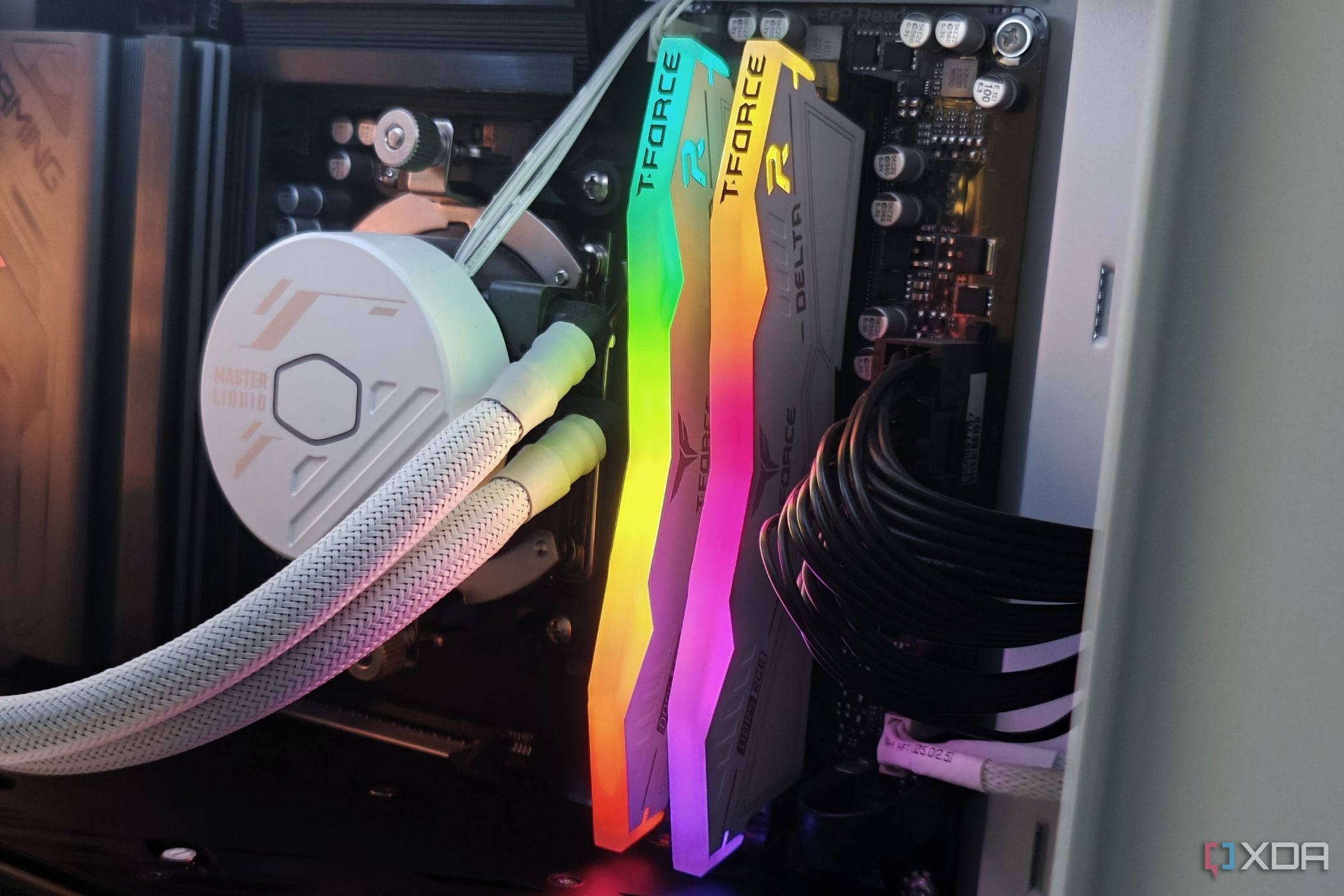
Related
RAM frequency vs. latency: What matters more?
What decides how fast your RAM is? Frequency or latency?
Unlike earlier DDR, filling your motherboard slots might be an issue
Let's see what happens with two slots vs four
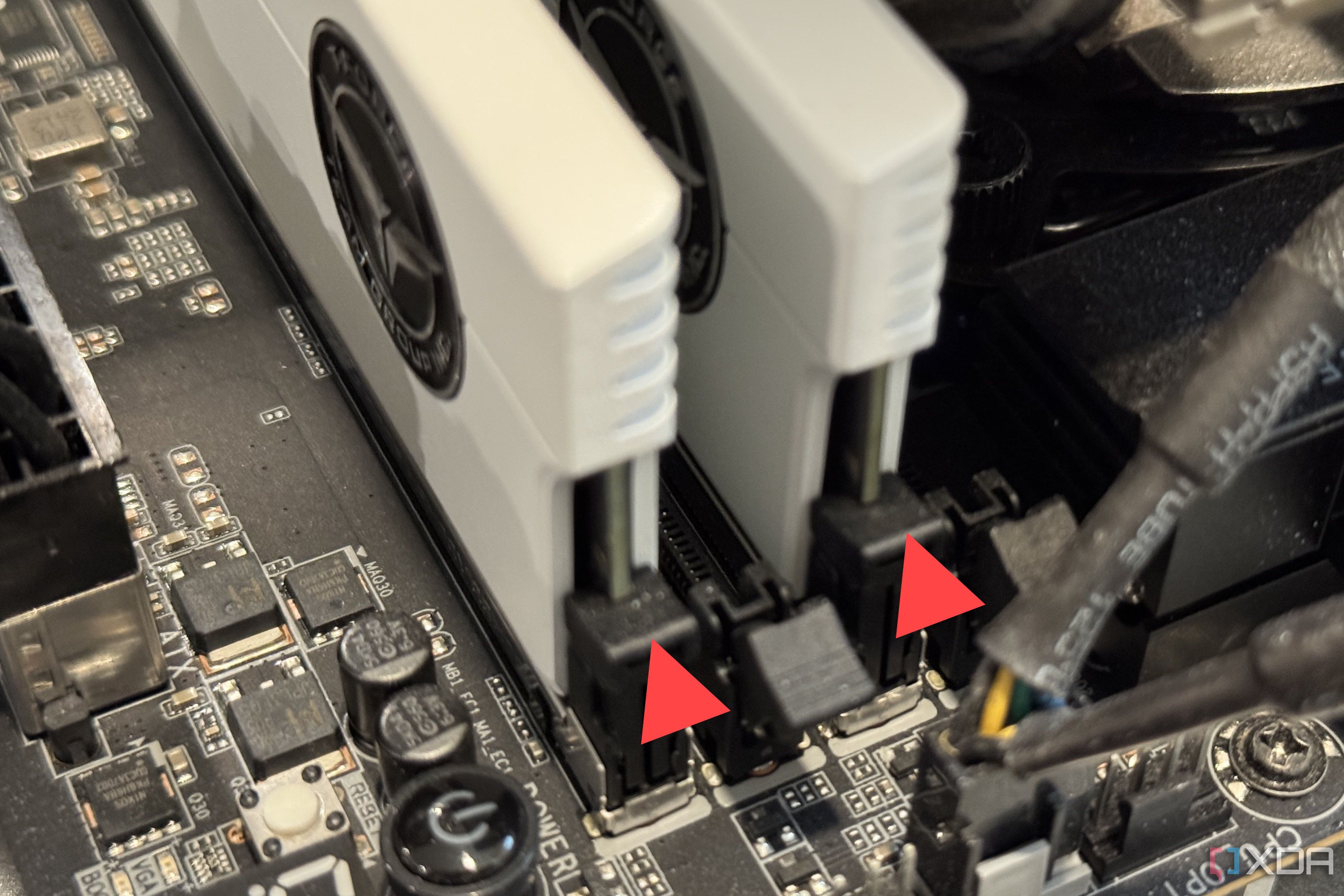
You might be tempted to fill all your RAM slots up. After all, it was the only way to achieve large memory capacities in previous generations. But DDR5 is different, and the wiring from the CPU to the slots is also optimized for two sticks. Most DDR5 motherboards want you to use A2 and B2 if you use two sticks. These are directly wired to the CPU socket and optimized for signal time, so either stick has the same time for the signal to reach it.
But if you want to use four sticks, most motherboards run a daisy chain topology, where A1 is daisy-chained from A2, and B2 is daisy-chained from B1, so the signal path is no longer optimal. Some older motherboards might have T-topology, where the traces go from the CPU and then split to the A and B pairs, but I've not seen any DDR5 motherboards with this. Most PC users get two DIMMs, and signaling issues with DDR5 might have made it challenging to implement.
Some practical examples
Take the two kits of Teamgroup Xtreem DDR5 I was testing with. They have XMP settings for 8,000 MT/s at CL38 and 6,000 MT/s at CL38. With two DIMMs installed, they boot at 8,000 MT/s every time. When I add the second kit in, even when they match IC type and speeds and are only a couple of serial numbers apart, the Intel Core Ultra 285K system boots at 6,000 MT/s and won't go any higher.
The CPU also uses Gear 4 for both XMP settings, with the memory controller at 2,000 MHz at 8,000 MT/s and 1,500 MHz at 6,000 MT/s. And I could probably push that 8,000 MT/s higher with some tweaks, as the Hynix ICs used are good quality.
Arrow Lake only has two "Gear" types, corresponding to Gear 2 and Gear 4 on earlier Intel CPUs. That means the memory controller will only run at a 1:2 ratio at best, half the MT/s that your DIMMs are set to, or 1:4 or 25% if Gear 4 is on.
I also tested the same two kits on an Asus ROG Crosshair X670E Hero with an AMD Ryzen 7900X. Thanks to AMD improving the IMC with firmware updates, I could also boot two DIMMs at 8,000 MT/s and CL38, and all four DIMMs at 6,000 MT/s and CL38. Unlike Arrow Lake, the AMD Infinity Fabric was at 1:1 when the DIMMs booted at 6,000 MT/s, meaning it wasn't negatively affected like the Intel system running at 1:4.
It just shows you that to get the best performance out of your DDR5 kit, you need the right combination of CPU IMC quality, DIMM quality, motherboard, and BIOS. If any of these elements aren't in sync (like my ongoing BIOS issues), the overall performance will degrade, even if you have a flagship CPU and motherboard.
That's why the general rule of thumb for DDR5 is to pick kits with two DIMMs unless you need more than 96GB of capacity. For workloads like AI, running on a unified RAM pool on AMD Strix Halo, having more capacity beats speed, latency, and bandwidth, so you want to use as much RAM as you can get.
DDR5 brings its own set of complications
DDR5 has been on the market since 2021, and it is only starting to come into its own for the performance it promised. Some of these were supply chain issues, as the power management chip was in short supply, while the majority were teething problems of any new DDR generation. If you're building a new PC, DDR5 is almost a given, since all the latest platforms require it. But to make the best choice of which modules, you'll need to consider more than frequency, timings, and capacity, even if those seem like the most critical factors.
.png)
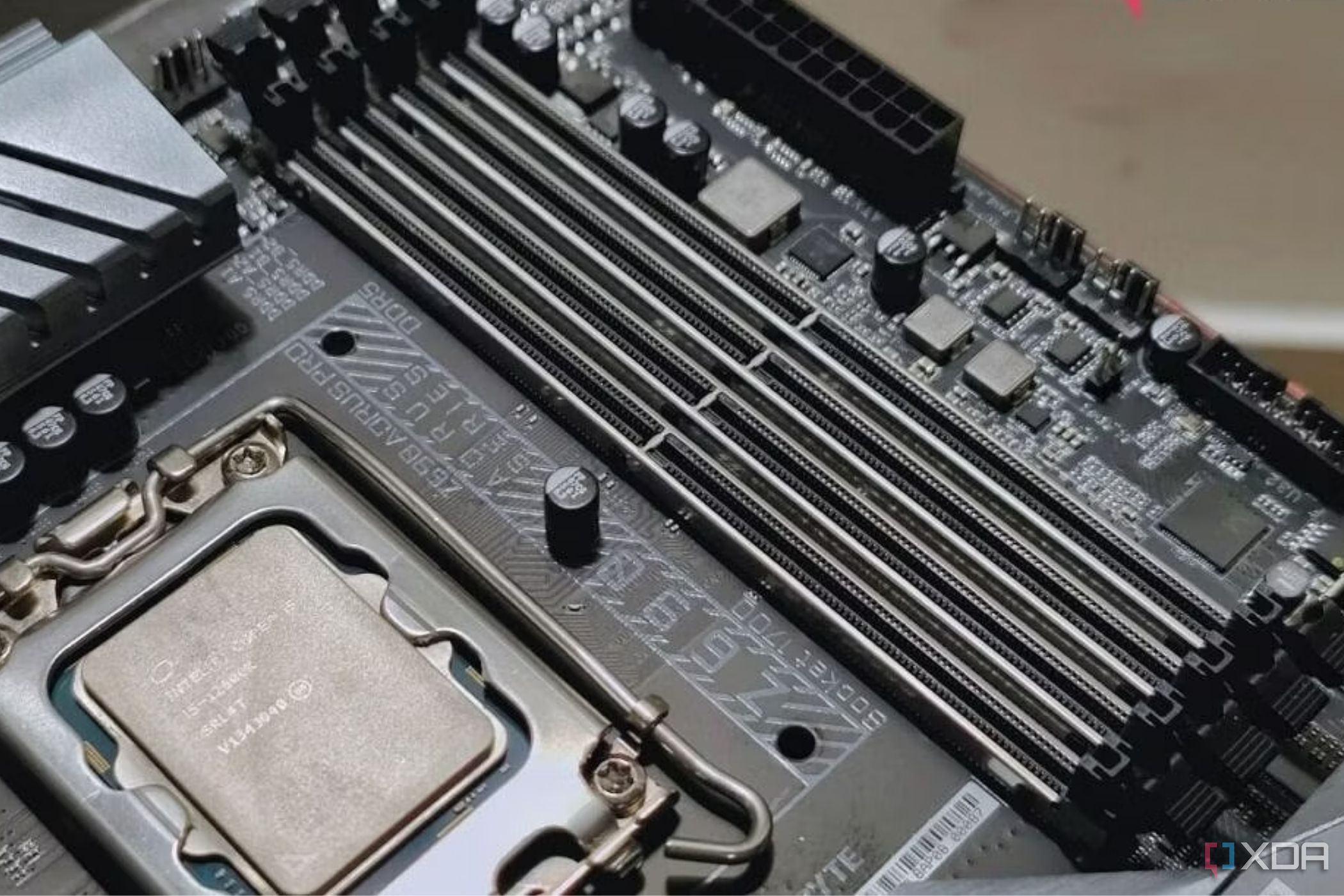
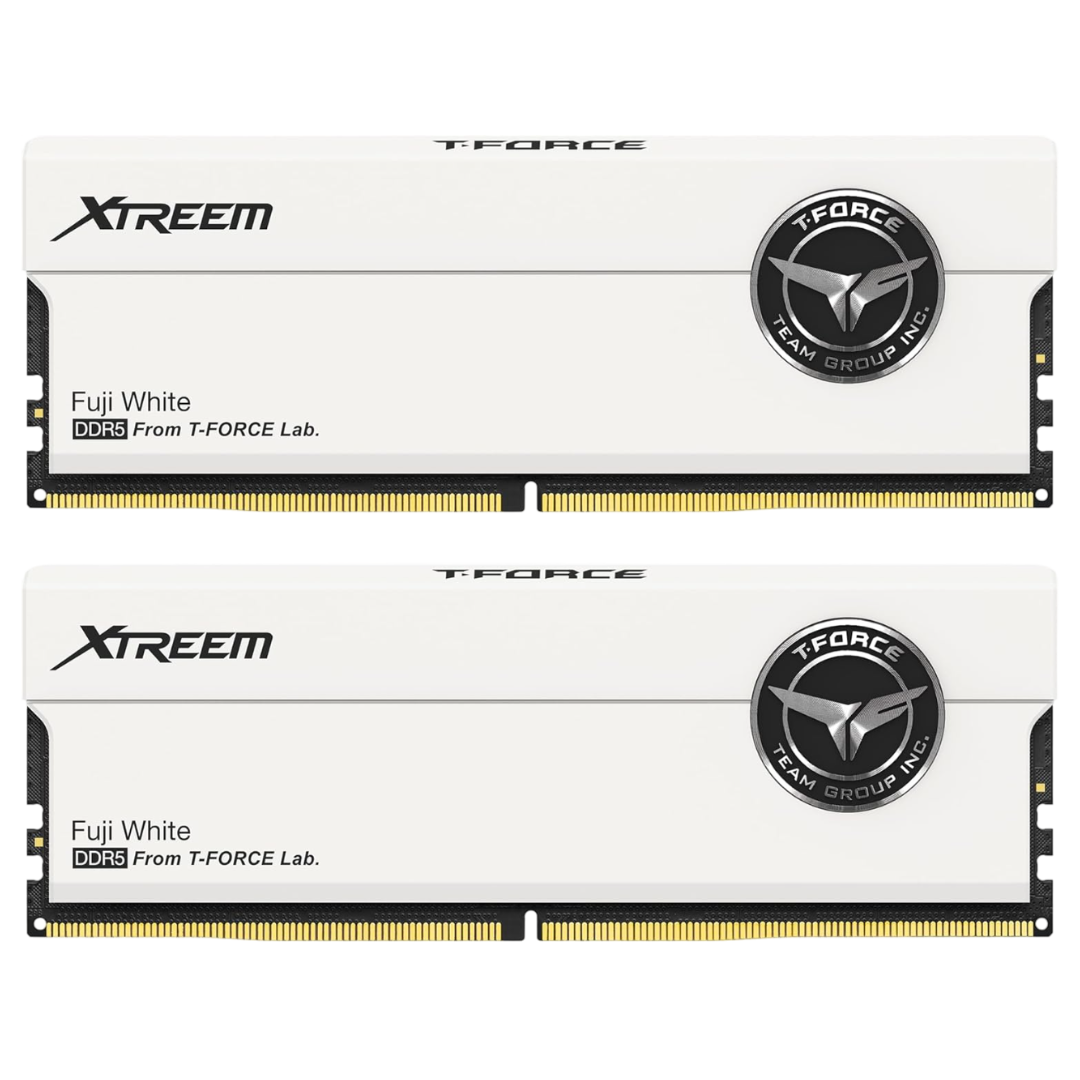
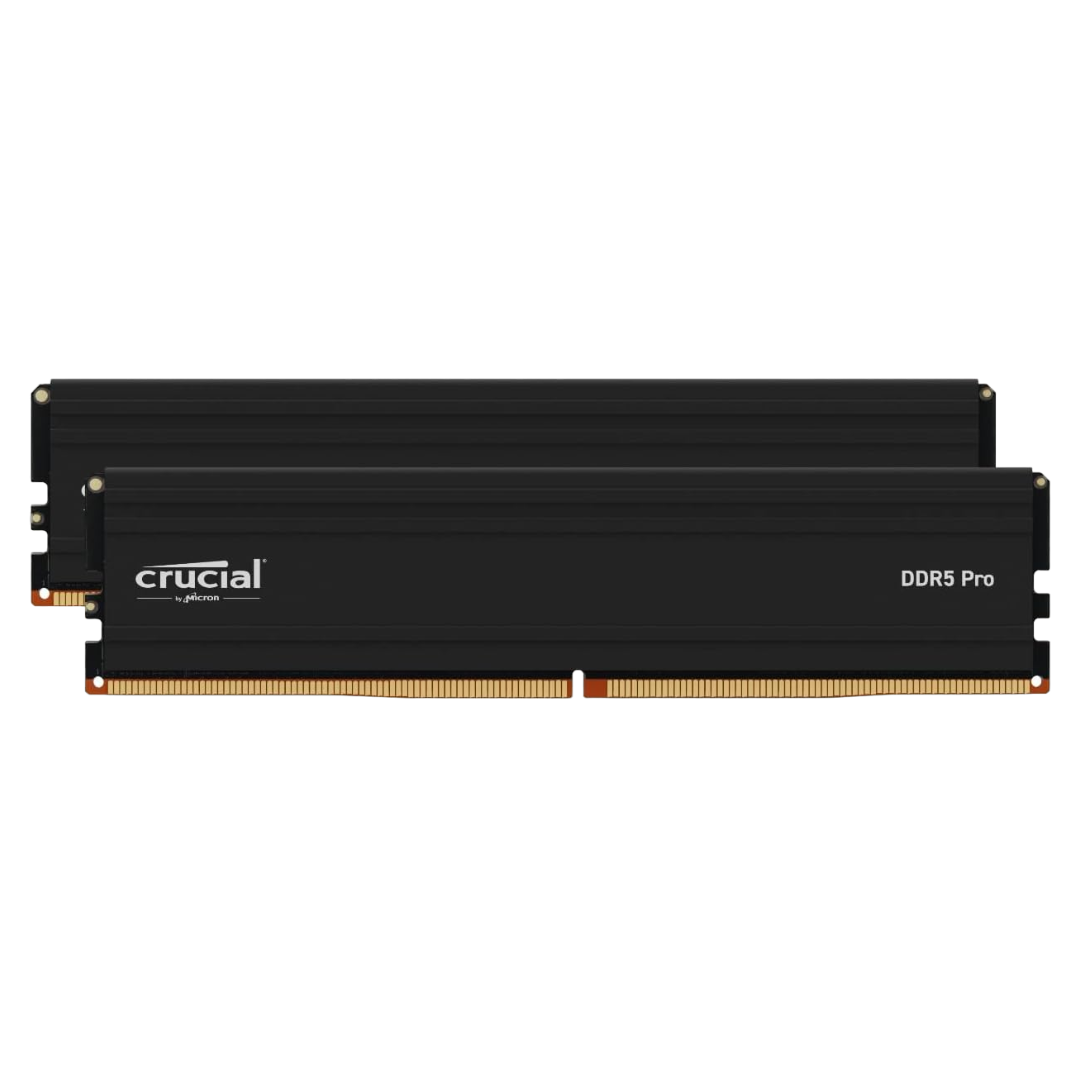











 English (US) ·
English (US) ·